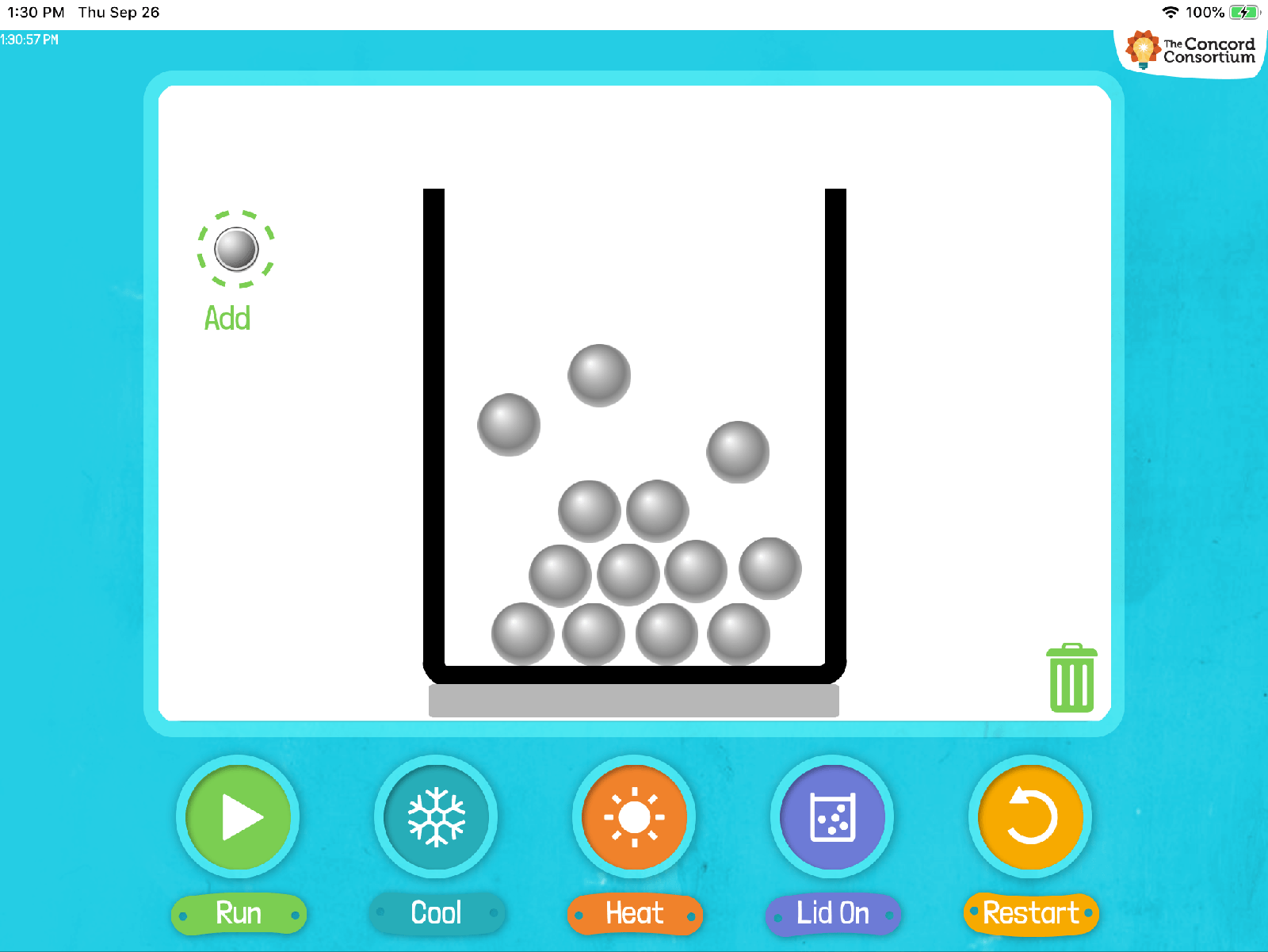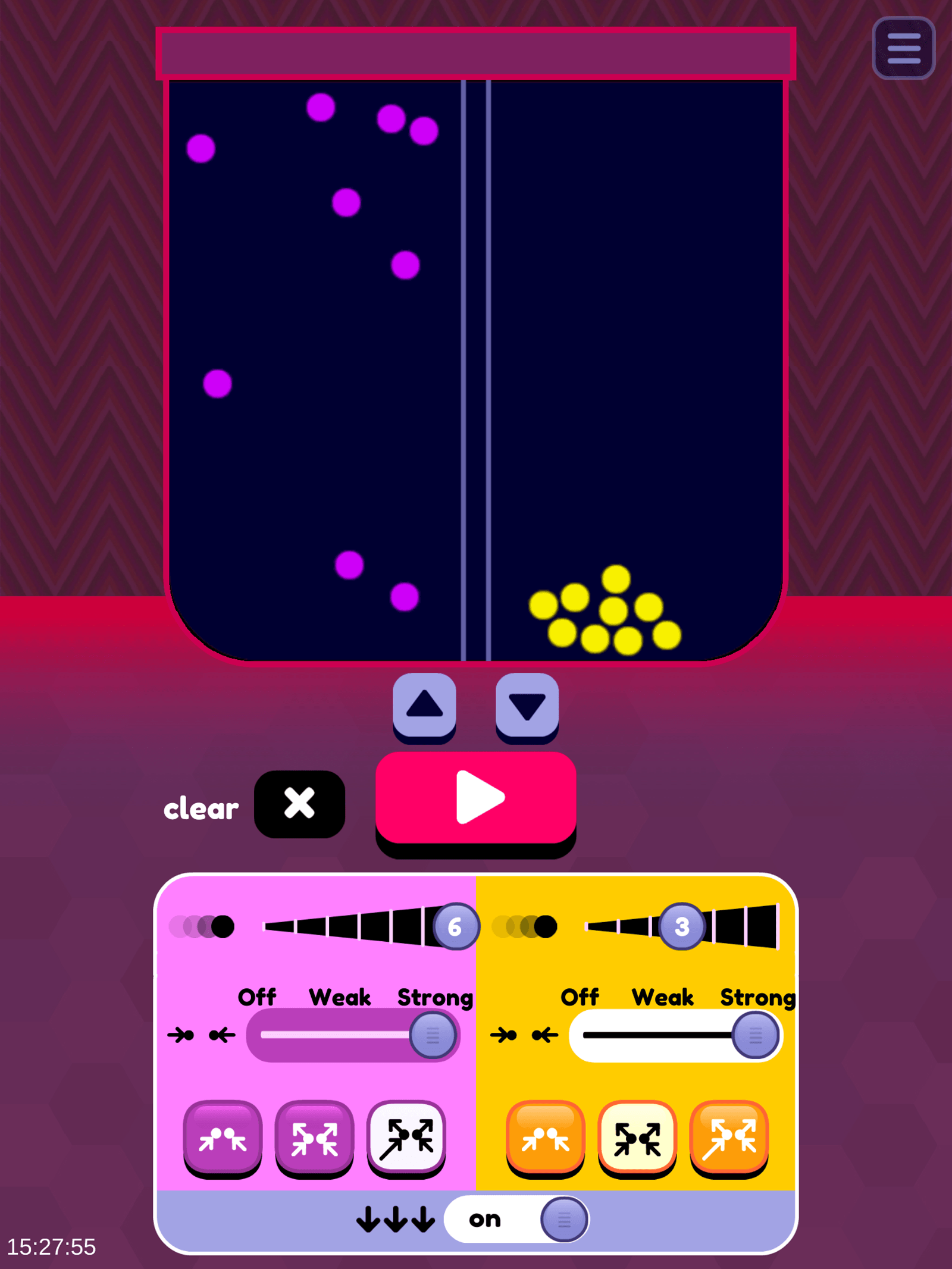Young Children Explore the Particle World with Apps
Children learn by constructing knowledge. With each new experience, they test their naive beliefs (or in the research literature, their “theories in action”) against the evidence. “What do I see/hear/feel? What do I know already? How does this relate to what I think I know?” They can then explicitly or implicitly affirm beliefs or reformulate theories. The Concord Consortium creates tools for children of all ages that provide firsthand evidence to test their developing theories and grow their knowledge about the world around them, including the hidden world of atoms and molecules that we can’t see or touch.
It has long been assumed that the particulate nature of matter is too abstract for young children to understand. Traditionally, the particle-based world is introduced in upper elementary grades or later when children already hold well-formed but incorrect ideas that are consequently difficult to change. The Sensing Science through Modeling Matter project is developing and researching a technology-enriched curriculum to support learning about matter and its changes at the kindergarten level. How do kindergarteners understand and use particulate models to explain physical phenomena such as states of matter and phase changes? How should we design apps for kindergarteners to learn to model these physical phenomena?
Computer models provide virtual laboratories for experimenting with things that are too small or too large, take place over too small or large a time scale, or are too dangerous to do in the classroom. Models also allow students to change important variables and focus on the evidence for sense-making and theory building, while masking the intricacies behind complex systems that are not important for students to understand at this point. We have found that given the right tools, children as young as kindergarten age can discover patterns in models of particle motions and their interactions, and reason with their consequences. They gain a better scientific understanding of the world and open their thinking to cause and effect explanations beyond their immediate senses.
When contemplating how to design software for young students to help them develop theories of the particle world, we considered two approaches that exemplify different paths to children’s learning. In one approach, students discover the patterns of particles that adhere to known physical laws; in the other, students construct the behavior of particles by setting rules for the way they interact and move.
The Particle Modeler
The Particle Modeler was designed for open-ended discovery (Figure 1). As an app for iPads and tablets, the Particle Modeler lets students “touch” virtual particles as well as see them. They drag particles with their fingers into a container, arrange them however they want, and click Run to see the particles move under the influence of the forces between the particles and gravity. The particles bounce off the container and are attracted to each other if their distance and speed allows. Unlike balls, they never stop moving.

Students can increase or decrease the temperature and watch how the particles change behavior. For instance, if the particles are in an initial state of a solid (close together at a relatively low temperature), increasing the temperature causes the particles to speed up while vibrating in place. Increasing the temperature a little more causes the particles to flow around each other, representing melting from solid to liquid. A still larger temperature increase results in particles flying around each other as they evaporate to a gas. Lowering the temperature reverses the process. Students can create a solid by cooling, though the solid will not return to the original shape. Through this process, children discover important concepts about matter and states of matter: increasing temperature does not always change the state, particles in solids wiggle in place, particles in liquids flow over each other, and gas particles fly around.
The Thermonator
The Thermonator app was designed primarily to construct the rules of particle behavior using controls for four properties that affect the particles: speed, attraction, elasticity, and gravity (Figure 2). There is no explicit control for temperature. Students simulate temperature using the speed setting. They create arrangements of particles in different states of matter by finding combinations of all variables. To create a solid, for instance, they change the speed to low and attraction to high.

Additionally, in the initial model, two sets of particles are separated by a barrier. Students can change the variables for particles on either side of the barrier independently and predict what will happen when the barrier is removed (e.g., what happens to the speed of slow particles when bombarded by a group of fast particles?).
The Thermonator gives students control over the forces that cause temperature change and state change (e.g., fast and slow particles colliding), as well as the chance to choose settings that do not automatically yield the laws of particle motion. The ability to create examples counter to the laws of physics that do not work adds meaning to the settings that do. For example, students can set attraction to zero and see what happens—namely, that it is impossible to make a solid arrangement of particles. In other words, they learn that attraction is a key principle of physics, helping describe why particles must have some attraction to come together, but not fly away. Similarly, when students see what happens in zero gravity, they come to understand that gravity is required to make a liquid “sit” at the bottom of the container.
Similar goals, different approaches
Our goal with these apps is to help open a world of exploration and develop an explanation for the changing states of matter that children see around them. Both provide playgrounds for young children to experiment with cause and effect.
The Particle Modeler demonstrates the physically correct behavior of particles influenced by different temperatures and gravity. Children observe the combined properties of particle attraction and speed on particles that they can arrange to make different states of matter. The Thermonator, on the other hand, requires knowledge of the separate properties. Children must figure out how to combine speed, attraction, elasticity, and gravity to create specific states of matter. These variables give children the opportunity to reflect upon and repair a theory in action that does not work.
We are in the early stages of fully understanding how best to introduce particle motion to young children. Our hypothesis is that the two different approaches may complement each other. Integrating them may help students build a more complete understanding of the particulate nature of the unseen world.
Nathan Kimball (nkimball@concord.org) is a curriculum developer.
George Forman (geforman@aol.com) co-directs the Sensing Science project.
Carolyn Staudt (cstaudt@concord.org) directs the Sensing Science project.
This material is based upon work supported by the National Science Foundation under grant DRL-1621299. Any opinions, findings, and conclusions or recommendations expressed in this material are those of the author(s) and do not necessarily reflect the views of the National Science Foundation.

